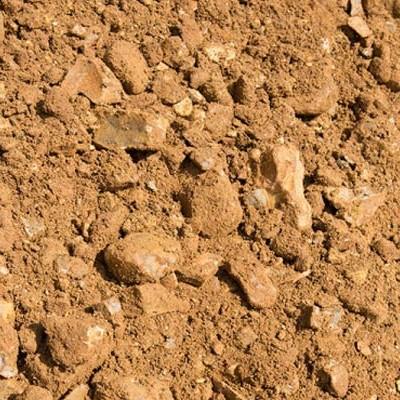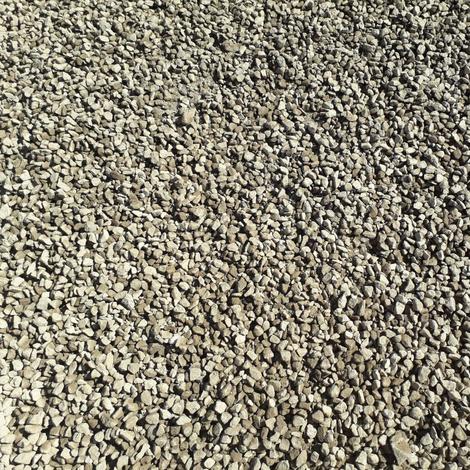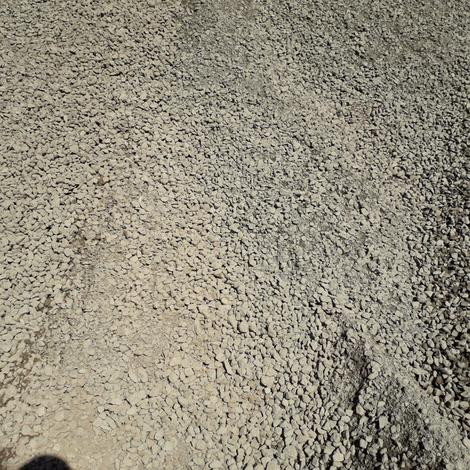Hoggin
Quarried locally in Dorset, Hoggin is the perfect base material for pathways and driveways. Affordable and adaptable, our top-quality Hoggin is ideal for both domestic and commercial uses for creating long-lasting pathways, driveways and much more.
How to Buy Hoggin
This Hoggin can be collected at one of our depots in Wimborne, Bournemouth or Dorchester, or our Hoggin can be delivered nationally to anywhere in the UK. We also offer samples of the Hoggin in-store.
Available Pack Sizes
850kg bulk bags
We can also deliver our soils as loose, tipped loads, as opposed to being in bags. Please call our friendly team on 01202 874207 if you require this service.
Hoggin is a type of surface material commonly used for pathways, driveways, and minor road construction. It is a mixture of gravel, sand, and clay, traditionally bound together with water to form a solid and durable surface. The composition of hoggin can vary depending on its intended use and the availability of local materials. The main components of hoggin are gravel and sand, which provide the bulk of the material's structure and stability. Gravel is typically sourced from quarries and consists of small, rounded stones of various sizes. Sand is often added to improve the texture and binding properties of the mixture. Additionally, clay may be included in the mix to provide cohesion and help bind the particles together. The process of creating hoggin involves mixing the gravel, sand, and clay in appropriate proportions and then compacting the mixture to form a firm surface. Water is often added during mixing to help bind the particles together and facilitate compaction. Once the hoggin has been laid and compacted, it forms a hard-wearing surface suitable for pedestrian and vehicular traffic. One of the advantages of hoggin is its permeability, allowing water to drain through the surface rather than pooling on top. This helps to reduce the risk of flooding and erosion, making hoggin an environmentally friendly choice for surfacing pathways and driveways. Hoggin is also relatively easy to maintain compared to other surfacing materials. Regular maintenance may involve regrading the surface to restore its smoothness and adding additional material as needed to fill in any depressions or wear areas. Overall, hoggin is a versatile and cost-effective surfacing material suitable for a variety of applications. Its durability, permeability, and ease of maintenance make it a popular choice for both residential and commercial projects. However, it's essential to ensure that the hoggin mixture is properly prepared and compacted to achieve the desired results. Pathways and Walkways: One of the primary uses of hoggin is in the construction of pathways and walkways. Its stable and compact nature provides a solid surface for foot traffic, making it ideal for garden paths, park trails, and pedestrian walkways in both urban and rural settings. The permeable properties of hoggin also allow for efficient drainage, reducing the risk of standing water and erosion. Driveways: Hoggin is often employed for the surfacing of driveways, particularly in rural areas or heritage properties where a more rustic appearance is desired. Its ability to withstand vehicular traffic, coupled with its natural aesthetic, makes hoggin an attractive choice for driveways leading to country homes, farms, and estates. Courtyards and Patios: Hoggin can be used to create inviting outdoor spaces such as courtyards and patios. Its earthy texture and warm tones complement various architectural styles, adding character to outdoor living areas. Hoggin patios offer a rustic charm and can be enhanced with additional landscaping features like seating areas, planters, and outdoor lighting. Garden Borders and Retaining Walls: In landscaping projects, hoggin is often employed for defining garden borders and constructing low retaining walls. Its versatility allows it to blend seamlessly with surrounding vegetation and hardscape elements, creating visually appealing transitions between different areas of the garden. Equestrian Surfaces: Due to its excellent drainage properties and firm footing, hoggin is sometimes used in equestrian applications, particularly for horse riding arenas and exercise tracks. The natural composition of hoggin provides a comfortable surface for horses while minimizing the accumulation of dust and mud. Historic Restoration: Hoggin is frequently used in the restoration of historic properties and heritage sites where traditional materials are preferred to maintain authenticity. Its use in such contexts helps preserve the architectural character and cultural heritage of the built environment. Overall, hoggin's versatility, durability, and aesthetic qualities make it a popular choice for a wide range of construction and landscaping projects, from pedestrian pathways to heritage restorations. Its enduring popularity speaks to its timeless appeal and practical benefits in various outdoor environments. Creating a hoggin path involves several steps to ensure durability, functionality, and aesthetic appeal. Hoggin, a traditional surfacing material, consists of a mixture of gravel, sand, and clay, offering a stable and permeable surface suitable for pathways and driveways. Here's a concise guide to creating a hoggin path: Site Preparation: Begin by marking out the path's route and clearing the area of vegetation, debris, and any obstacles. Ensure the ground is well compacted and level to provide a solid base. Edging Installation: Install edging along the sides of the path to contain the hoggin and prevent it from spreading onto surrounding areas. Options include timber, metal, or brick edging secured firmly into the ground. Base Layer: Apply a base layer of coarse gravel or crushed stone to a depth of around 100mm. Compact the base layer thoroughly using a mechanical compactor to create a firm foundation that promotes drainage. Hoggin Application: Spread the hoggin mixture evenly over the compacted base layer to a depth of approximately 50mm. Use a rake and screed board to ensure uniform coverage and a smooth finish. Compaction: Compact the hoggin layer using a vibrating plate compactor, making multiple passes over the surface to achieve optimal compaction. This helps to stabilize the path and minimize the risk of settlement over time. Moisture Control: Lightly moisten the hoggin surface with water to aid compaction and binding. Avoid over-watering, as excessive moisture can cause the material to become muddy and lose its stability. Finishing Touches: Once compacted, use a broom or brush to sweep excess hoggin off the surface and fill in any low spots or irregularities. Tamp down any loose areas and ensure the path's edges are neat and well-defined. Curing Period: Allow the hoggin path to cure for a few days before heavy use to allow the material to settle and bond properly. During this time, keep foot traffic and other activities to a minimum to avoid disrupting the surface. By following these steps, you can create a durable and visually appealing hoggin path that enhances the aesthetics and functionality of your outdoor space. Regular maintenance, such as periodic re-leveling and replenishing of hoggin material, will help ensure the longevity and performance of the path over time. PLEASE NOTE: While every effort has been made to ensure our Hoggin is free from contamination; there is always the chance that there may be small pieces of debris present. Please ensure you handle the sand with care when using it. Sample Hoggin is available in-store, please ask a customer advisor. Our top-rated delivery service is reliable and flexible to suit you, however, it can vary depending on where you live. Click here for more information on our delivery service and if your postcode is classed as 'local' or 'national.' Any questions? Use our live chat to speak to an advisor, alternatively, you can fill out an enquiry form or call us on 01202 874207. Read More...
What is Hoggin?
Hoggin for Gardens and Landscaping
How to Create a Hoggin Path
Buy With Confidence
A Service You Can Rely On
A Delivery Service Tailored to You
Delivery information






